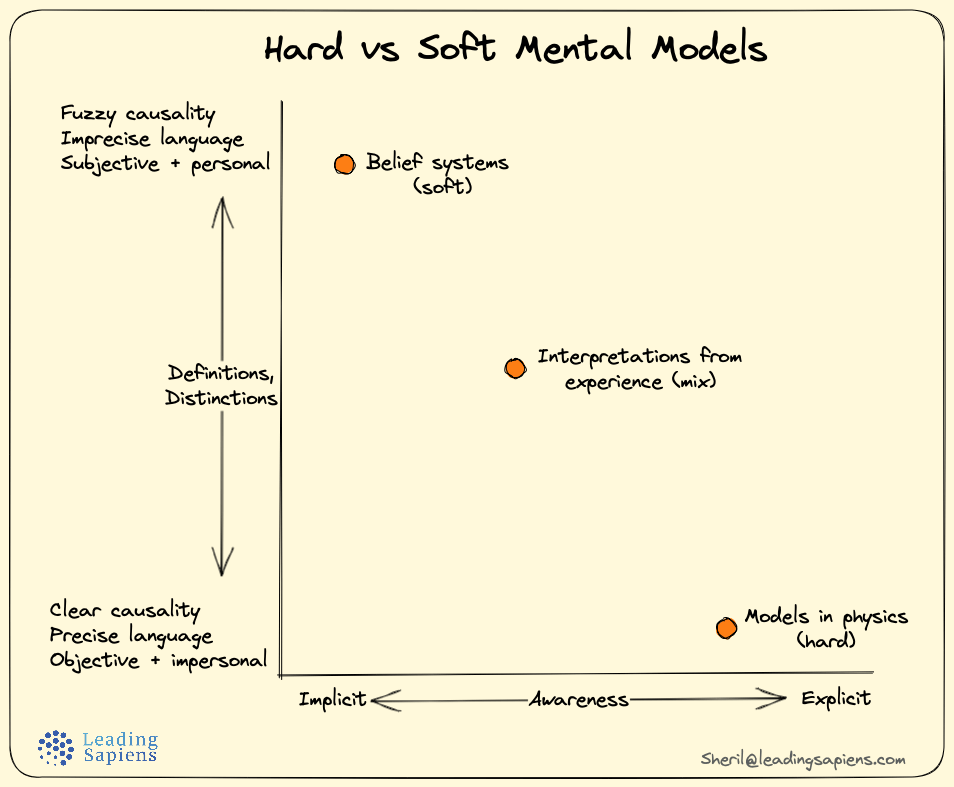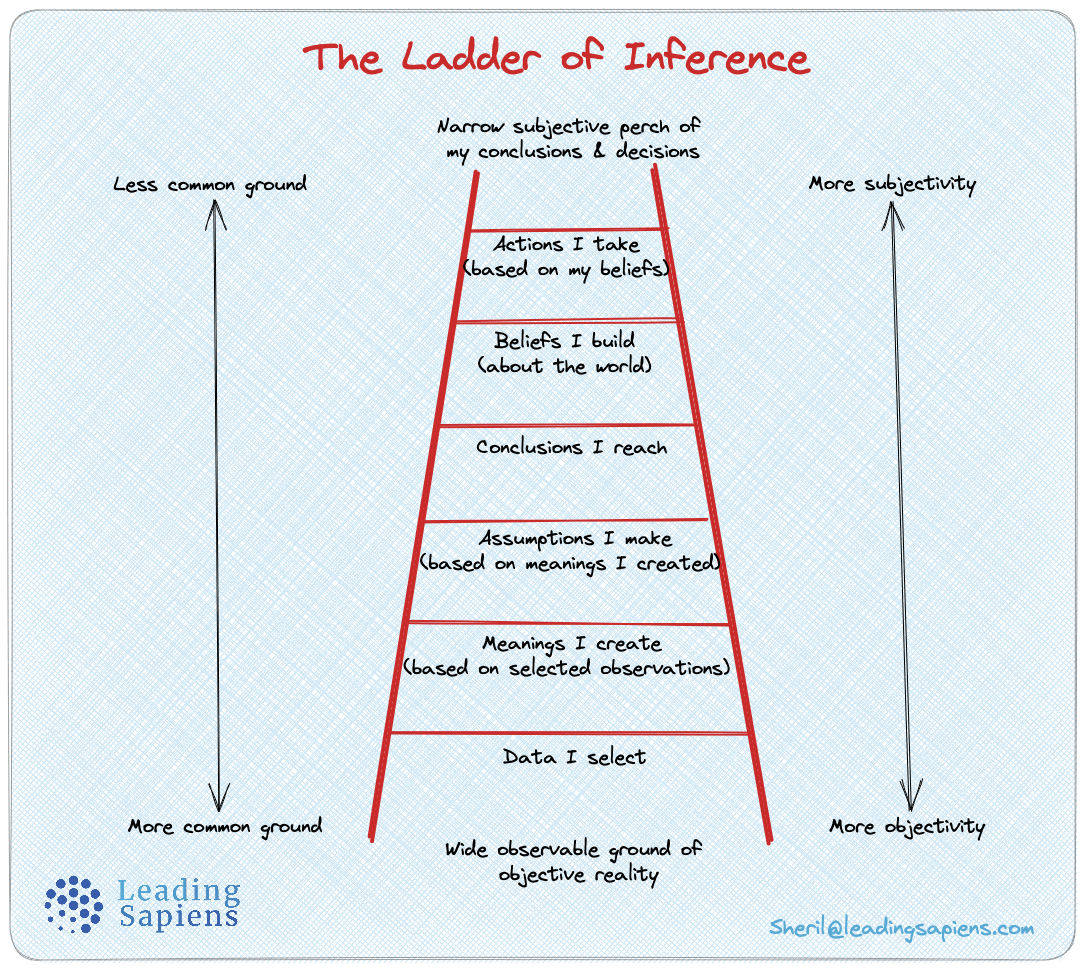What makes someone “leadership material”? We would like to think there’s an objective answer to that question. But often the correct answer depends on not just who’s answering the question but also on who’s asking. Why? Because everyone has what researchers call an implicit leadership theory (ILT).
Since 1975, there have been hundreds of studies on various aspects of implicit leadership theory. Unfortunately, most of the findings are unknown outside academia.
Not being aware of it can be a blindspot and stumbling block. A mismatch between your implicit leadership theory and that of your organization can mean missed promotion opportunities, not being considered for leadership roles, or worse, career derailment.
This article covers:
- What is Implicit Leadership Theory (ILT)
- Test your awareness of Implicit Leadership Theory
- Prototypical traits identified in Implicit Leadership Theory
- Key findings from research on Implicit Leadership Theory
- Career implications of Implicit Leadership Theory
What is Implicit Leadership Theory
According to ILT we perceive someone as a leader or non-leader based on the implicit images and perceptions about leadership that we carry. In other words “leadership is in the eye of the beholder”.
Our implicit leadership theory is a generic collection of everyday conceptions and internalized beliefs about leaders and leadership, their traits, and expected behaviors. These implicit theories are essentially a group of mental models and heuristics about leadership that act as mental shortcuts.
They influence how we respond to leaders and how we influence others as leaders. But they are implicit and thus by definition we are not aware of them.
We use these theories to judge others’ leadership abilities. We classify people as leaders or non-leaders, as effective or ineffective leaders, based on how closely and consistently they match our implicit leadership theory.
We form a prototype of a leader from our social and work interactions. Stereotypes are an extreme version of ILT where it’s reduced to a caricature.
Implicit leadership theories consist of:
- positive and negative traits of leaders
- their behaviors
- notions about power and influence
Factors that influence ILT include:
- professional backgrounds
- social interactions
- culture, family, early experiences
- organizations and what they promote
- good/bad personal experiences with leaders
- the context: for eg direct manager vs a country’s president
Implicit leadership theories are colored lenses we wear
Laura Liswood in The Loudest Duck shares a story about Vigdis Finnbogadottir, the former president of Iceland, who was the first and longest serving woman president in the world:
After about eight years in office, she started to notice that children under the age of eight often thought that only a woman could be president. President Vigdis had many boys ask her if the president of Iceland could be male. Because the boys had only ever known a woman to be president, they didn’t understand that they could possibly be president of their country some day.
…We quickly come to believe that our experiences and observations represent not only how the world works but also how it should work. I call this the power of the mirror.
This is akin to what Thomas Kuhn calls paradigm blindness:
Something like a paradigm is prerequisite to perception itself. What a man sees depends both upon what he looks at and also upon what his previous visual-conceptual experience has taught him to see.
- Thomas Kuhn in Structure of Scientific Revolutions
Although not always as dramatic, everyone has similar unexamined notions about leadership. Our idea of an effective leader might be about being assertive or being thoughtful, being charismatic or being a tyrant, being a good listener or being a strong speaker, and so on.
These notions are less like a mirror and more like colored lenses that filter everything we see. Just like the boys, we see leaders and our own capabilities as a leader through these lenses.
They affect not just our behavior but how our actions get perceived by others. Leadership ability often has less to do with an objective criteria and more with the implicit theories about leadership that others carry.
Since we have built these glasses through our experiences, each of us has a unique pair. We see the world through these glasses and make sense of it.
Test your awareness of Implicit Leadership Theory
Answers to the following questions can yield some clues about how aware you are about your own implicit leadership theory:
- When you think of an ideal leader what comes to mind? What about an ineffective one?
- What role did ILT play in your last promotion or the last interview?
- What are your background stories about leadership and your leaders? How is that affecting your approach to work?
- Does your ILT assume that leaders are supposed to have all the answers? Or that they should be extroverted?
- What are other assumptions that might be counter-productive and holding you back?
- What is your organization’s ILT? Do you see a pattern of implicit leadership theories in the people getting promoted in your organization?
- How will your organization answer the question “what makes an effective leader here is: …” . How aligned or misaligned is your ILT compared to this?
Prototypical traits identified in Implicit Leadership Theory
In studies spanning over 4 decades across organizations and cultures, researchers found a set of positive and negative common traits in people’s implicit leadership theories. These are prototypes we have when we think of someone as a leader.
They found eight primary attributes:
- Sensitivity—sympathetic, sincere, warm, forgiving, helpful, compassionate, understanding
- Dedication—motivated, goal-oriented, disciplined, hard working
- Charisma—energetic, enthusiastic, inspiring, involved, dynamic
- Attractiveness—classy, well groomed, tall
- Intelligence—educated, intellectual, clever, knowledgeable, wise
- Strength—forceful, bold, powerful, strong
- Tyranny—domineering, pushy, dominant, conceited, loud, selfish, demanding, power hungry, manipulative
- Masculinity
In more recent research a ninth attribute of creativity has surfaced.
Thus, people have both positive and negative notions about leaders in their implicit theories. Leaders can motivate, inspire, and support but can also be controlling and manipulative. As to what traits someone identifies with, it varies by individual experiences, culture, and demographics amongst other factors.
The traits that had the highest association with leaders were those of intelligence, masculinity, and dominance. Clearly, the last two have implications for women in being identified for their leadership potential as these better fit the traditional stereotype of a man.
Key findings from research on Implicit Leadership Theory
Consider the following findings from a meta-analysis of hundreds of studies on implicit leadership theory [1] :
- Leaders who fit ILTs receive higher performance evaluations than leaders who do not fit
- Leaders who fit followers' ILTs are rated higher on control
- Leaders who fit ILTs receive higher general leadership impressions
- More causal attributions and attributions of influence and power are made on leaders who fit ILTs
- Leaders who fit typical ILTs are attributed more technical competence
- Leaders are more liked if they fit followers' ideal ILTs
- Leaders receive higher popularity ratings when they fit ideal ILTs
- Leaders who fit an ideal leader image and do not fit a counter-ideal leader image are more respected
- The group is evaluated more favorably if the leader fits ILTs
- Male leaders provide a better fit with leadership prototypes than female leaders
- ILTs affect objective processes such as performance ratings and how leaders evaluate their employees.
It's clear that implicit leadership theory pervades almost all aspects of organizational life. Consider some common work scenarios where ILT is in play :
- Performance appraisals
- You evaluating others
- Evaluation of your leadership potential
- Evaluation of your leadership effectiveness
- Promotion recommendations and decisions
- Being considered for leadership assignments
- Interview and selection processes
Career implications of Implicit Leadership Theory
ILT demonstrates that there is often no universal agreed upon definition of what “effective leadership” is. It depends on the context, the organization, and the people involved especially those in power.
Because they are implicit and we are usually not aware of them, uncovering our existing implicit leadership theory can help highlight blind spots and in taking corrective actions.
1. Leadership is a social construct
Context and environment matters. The environment surrounding you is as important to your career trajectory as is your personality. Your team and organization’s ILTs play a significant role in how you are perceived and the effectiveness of your leadership.
Most traditional leadership development and coaching focuses on the individual leader and self-awareness but this is only one side of the story. While “leader” might be a one-person construct, “leadership” is a social construct that is inter-dependent.
Most of us are unaware of our own implicit leadership theories (ILTs). More importantly, neither are we aware of our organization’s or our team’s ILTs. Thus social awareness is equally important as self-awareness.
2. ILT can explain behavioral patterns
ILT influences how you as a leader interpret your role and what meaning you make of your day to day events and interactions. If my implicit leadership theory is a dominating and tyrannical one that’s how my leadership style is going to be.
It shapes our expectations of leaders and leadership and thus how we respond to them. This is important to be aware of both as a leader and follower.
3. Followers’ ILT matters
Influence is a key aspect of leadership. Follower perceptions matters because this influences how receptive they are to you and how effective your overall team is. The more results you can deliver, the better your future prospects.
4. Organizational ILT influences leaders
As much as leaders influence their organizations, they are equally shaped by their organization. ILT plays a key role in what their organization expects from them and how they are expected to behave and carry themselves. When the organization’s ILT and yours are in alignment it can create ideal conditions for a flourishing career. Otherwise, it’s the opposite.
5. ILT can uncover limiting assumptions
Closely examining our ILT can highlight how we might be unknowingly limiting ourselves. For example consider the following notions:
- that effective leaders are extroverts
- that you have to be a strong orator
- you have to be eternally confident
While these can surely help, they are not limiting factors for effective leadership.
6. Alignment of ILTs influences career prospects
Your organization’s ILT plays a critical role in whether you ascend the leadership ladder or not. If everyone in the executive team is an engineer and you aren’t, the odds are stacked against you. But these criteria are often more subjective and harder to detect.
A mismatch between your organization’s implicit theories of leadership and your personality characteristics means fewer career opportunities. Minorities and women are an obvious example but it’s equally applicable at more subtle levels.
The better aligned your ILT is with that of your organization's, the higher your chances of success. Find workplaces where you are ideally suited.
7. ILT plays a key role in leadership assessments
Most assessments of leadership performance and ability are not necessarily based on objective reality but on subjective notions rooted in the person’s implicit theories about leadership. The less objective the criteria and higher the degree of uncertainty, and more likely that ILT will play a factor.
Whether you got selected for a role has a lot to do with the interviewer’s ILT and a match/mismatch with yours. For example, if my ILT of an effective leader is that of someone who takes quick decisions, a thoughtful leader who mulls over decisions can easily be seen as a weak, indecisive one.
The people making these decisions are flawed human beings swayed by their biases and notions about leadership. We can either rail against the system or play the game accordingly.
8. Figure out your organization’s ILT
Who gets promoted and who doesn’t? What’s encouraged and what’s not? What do leaders say but don’t do? There is often a pattern in who typically gets promoted or selected for leadership roles. These patterns point to the organization’s implicit leadership model. “Success leaves clues” and so do leaders in organizations.
In some well run organizations the leadership philosophy is codified but more than often it’s not. Even when it’s explicitly codified there’s usually a difference between what’s claimed and what’s practiced.
Our job to figure out the implicit leadership theory through close observation and in depth conversations. Observe actions and behavior rather than what somebody states about their leadership theories.
Having a good grasp on what is generally accepted as “effective leadership” can offer clues into what you need to work on. Being blind to these factors limits career prospects.
9. Tailor your ILT
Your effectiveness as a leader is dependent on how congruent your ILT is with that of your team’s and the larger organization’s. What might have been perceived as “leadership behavior” in one organization can easily be misinterpreted as otherwise in a new one.
For example your operating style might be different from what your manager perceives to be an effective leadership style. You have a democratic inclusive style while your manager has an autocratic, non-inclusive one.
Even though your objective performance is good, they might not see you as having “leadership potential” because of the difference in ILTs. Tailor your ILT to map your organization’s.
10. Widen your repertoire
As a leader, the wider the repertoire of implicit leadership theories you have, the more versatile and effective you will be in a wide range of situations. The less diverse your concepts, the more rigid and thus not best adapted to varying situations.
Develop flexibility and versatility in how you operate — try leadership behaviors that run counter to what you are prone to doing. Go through the list of traits found in ILT research and check for what you might be lacking.
A wider range of ILT enables you to adapt better to changing conditions.
As a rule, we disbelieve all theories and facts for which we have no use.
- William James, father of American psychology
Given its pervasiveness and potential implications, we cannot afford to ignore either our implicit leadership theories or of the organization’s.
ILT is an important and inescapable part of organizational life. Understanding it and making adjustments can help avoid unnecessary frustrations and better position ourselves for career success.
Related reading
- Implicit leadership theory is just one type of hidden mental model amongst many others. Common discourse focuses on an additive approach of learning new models. Instead, a subtractive approach that focuses on updating or eliminating soft but hidden mental models can be far more effective.

- One useful tool to uncover hidden assumptions is the ladder of inference that shows how we reach conclusions and the common pitfalls. Understanding and slowing down the process can help with better decisions and also understanding the other's viewpoints.

- Often there is a difference between what we claim and what we actually do. This is true for organizations as well. Defensive routines are a key reason. You can find more details in Learning to Learn - Why Professionals Struggle with this MetaSkill.
Sources and references
- Implicit theories in organizational settings: A systematic review and research agenda of implicit leadership and followership theories by Nina Junker and Rolf van Dick.
- The Wiley-Blackwell Handbook of the Psychology of Leadership, Change, and Organizational Development.
- The Bass Handbook of Leadership Theory Research and Managerial Applications.
- Encyclopedia of Leadership Vol 1.
- Leadership, A Communication Perspective by Craig Johnson and Michael Hackman.
- Teaching Implicit Leadership Theories to Develop Leaders and Leadership: by Birgit Schyns, Tina Kiefer, Rudolf Kerschreiter, Alex Tymon.
- The role of implicit leadership theories in the performance appraisals and promotion recommendations of leaders by Birgit Schyns.
- Implicit theories of leadership: Stability and change over two decades by Lynn Offermann, Meredith R. Coats.
- The Mirror and the Window: Making Implicit Perceptions of Leadership Explicit by Anne Greenhalgh, Christopher Maxwell.
- The Loudest Duck by Laura Liswood.



